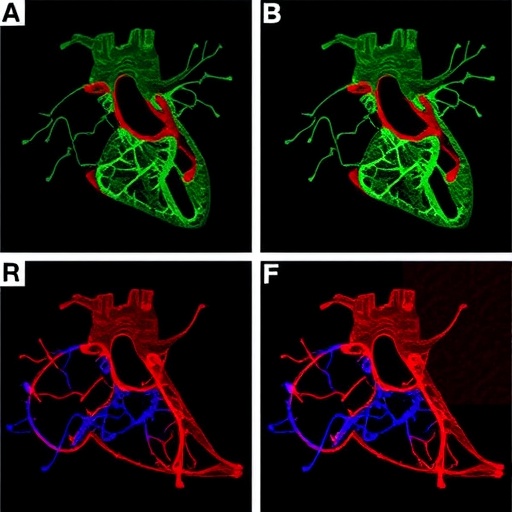In recent heart disease research, a groundbreaking study by Katanasaka et al. has brought to light the significant implications of protein arginine methyltransferase 5 (PRMT5) in cardiac physiology. Their findings, published in the Journal of Biomedical Science, showcase how the cardiac-specific overexpression of PRMT5 leads to detrimental effects on heart health when subjected to pressure overload. This correction to previous findings deepens our understanding of heart failure mechanisms and emphasizes the pressing need for innovative therapeutic strategies in tackling cardiac hypertrophy.
The role of PRMT5 as a methyltransferase is well-established in regulating various cellular processes, including gene expression and signal transduction. However, Katanasaka and colleagues have taken a novel approach by specifically examining its impact on cardiac tissues. This innovative focus reveals that an overabundance of PRMT5 within cardiomyocytes may initiate a cascade of pathological changes, characterized primarily by hypertrophy and subsequent heart failure. The findings indicate that PRMT5 is not merely a passive player in cellular regulation but rather a crucial contributor to the adverse remodeling of the heart under stress conditions.
In their study, Katanasaka et al. utilized a well-characterized mouse model subjected to chronic pressure overload. Through rigorous experimental procedures, they observed that the hyperexpression of PRMT5 significantly heightened the susceptibility of the heart to pathological hypertrophy. The methodology employed was not only meticulous but also representative of common clinical scenarios, thus enhancing the translational potential of their findings. By establishing a direct correlation between PRMT5 levels and cardiac response to stress, the authors have paved the way for further studies that may elucidate preventative strategies against heart failure.
Moreover, the histological examinations performed in the study revealed pronounced alterations in the cardiac architecture among mice with elevated PRMT5 expression levels. The cardiomyocytes displayed excessive hypertrophy, which was further exacerbated by the pressure overload. This pathological enlargement of the heart cells is a hallmark of heart disease and signifies an impending risk of heart failure. The researchers meticulously documented these structural changes, reinforcing their argument of PRMT5’s role in facilitating adverse cardiac remodeling.
Interestingly, the study also delved into the molecular underpinnings that link PRMT5 overexpression to the hypertrophic response. The research team discovered that PRMT5 influences the expression of several hypertrophic markers and growth factors, including ANP and BNP, which are critical in mediating the compensatory responses of the heart to increased workload. By elucidating these pathways, Katanasaka et al. not only provide a stark warning regarding the enhanced dangers of PRMT5 but also underscore potential targets for interventions aimed at curtailing heart disease progression.
As heart failure continues to pose a major health burden globally, unraveling the intricacies of its molecular basis becomes increasingly crucial. Katanasaka’s team’s findings emphasize the necessity of focusing on regulatory proteins like PRMT5, which, although vital for normal cellular functions, can precipitate severe pathological conditions when dysregulated. This perspective advocates for a refined approach in both the diagnosis and treatment of heart conditions, shifting the narrative towards molecular-level alterations that may be reversible if targeted correctly.
Upon further examination of the broader implications of these findings, it becomes evident that therapeutic strategies that modulate PRMT5 function could potentially lead to significant advancements in heart disease management. For example, the development of small molecules that inhibit PRMT5 activity may offer a new avenue for delaying or even reversing hypertrophic changes caused by pressure overload. Such therapeutic innovations could not only enhance patient outcomes but also shift the focus of cardiovascular research towards effective disease modification rather than merely symptomatic treatment.
The investigative team has also highlighted the necessity for longitudinal studies to validate their findings in a clinical context, particularly regarding the potential consequences of pharmacological PRMT5 inhibition. Understanding how it may affect various patient populations, including those with pre-existing cardiovascular conditions, is essential to ascertain the safety and efficacy of such interventions. These future studies could catalyze a new wave of cardiovascular therapies, underscoring the pivotal role of research in innovating patient care strategies.
Ultimately, the findings presented by Katanasaka et al. are a reminder of the complex interplay between genetic regulation and cardiac pathology. As researchers continue to unravel the layers of cardiovascular diseases, it becomes clear that a holistic approach—integrating molecular biology, genetics, and clinical research—will be essential. This multifaceted understanding could not only illuminate the mechanisms underpinning heart disease but also lead to innovative treatment paradigms that significantly alter patient prognosis.
The study by Katanasaka and collaborators thus serves as a rallying call for the scientific community to delve deeper into the molecular foundations of cardiovascular diseases. The potential revelations that could emerge from this area of research are vast and may prove transformative in how heart diseases are perceived and treated. Katanasaka et al. remind us that understanding the underlying mechanisms at play is crucial in forging paths toward effective therapies that address the root causes of these conditions rather than merely their symptoms.
In conclusion, the ongoing exploration of PRMT5’s involvement in cardiac overexpression during hypertrophic responses heralds a new chapter in heart disease research. By identifying this critical link, Katanasaka’s research adds a pivotal piece to the puzzle of cardiac pathology. As scientists strive toward unraveling the complexities of hypertrophy and heart failure, studies like these stand as vital signposts guiding the future direction of cardiovascular research and therapeutic innovation.
Subject of Research: Cardiac-specific overexpression of PRMT5 and its implications for pressure overload-induced hypertrophy and heart failure.
Article Title: Correction: Cardiac-specific overexpression of PRMT5 exacerbates pressure overload-induced hypertrophy and heart failure.
Article References:
Katanasaka, Y., Sunagawa, Y., Sakurai, R. et al. Correction: Cardiac-specific overexpression of PRMT5 exacerbates pressure overload-induced hypertrophy and heart failure.
J Biomed Sci 32, 80 (2025). https://doi.org/10.1186/s12929-025-01174-2
Image Credits: AI Generated
DOI: 10.1186/s12929-025-01174-2
Keywords: PRMT5, cardiac hypertrophy, heart failure, pressure overload, therapeutic strategies.




